
GF0600050RevE06
©GF Health Products, Inc.
August 2006
IMPORTANT: READ THIS MANUAL BEFORE
OPERATING YOUR WHEELCHAIR
Everest
™
with Captain Seat
POWER WHEELCHAIR
OWNER'S MANUAL

2 GF0600050RevE06, August 2006 Everest with Captain Seat Owner's Manual
CONTENTS
I INTRODUCTION ............................................................................................................... 3
II IMPORTANT SAFETY PRECAUTIONS ........................................................................... 4
III HANDLING TIPS .............................................................................................................. 9
IV GETTING STARTED ...................................................................................................... 11
V OPERATING INSTRUCTIONS ...................................................................................... 14
VI ADJUSTMENTS ............................................................................................................ 15
VII BATTERIES .................................................................................................................. 24
VIII MAINTENANCE .......................................................................................................... 32
IX TROUBLESHOOTING ................................................................................................... 38
X LIMITED WARRANTY .................................................................................................... 45
XI INDEX ............................................................................................................................ 47

3Everest with Captain Seat Owner's Manual GF0600050RevE06, August 2006
READ THIS MANUAL BEFORE OPERATING YOUR WHEELCHAIR
I INTRODUCTION
Important safety, operating, and maintenance instructions that warrant your attention are included in
this owner's manual. Read the entire manual carefully before operating your new wheelchair, and refer
to it as often as necessary to help maintain good performance standards. If you do not understand the
warnings and instructions provided herein, contact your healthcare professional, Graham-Field Health
Products dealer or technical representative before proceeding with the use of this product; otherwise
personal injury or damage to your wheelchair could result.
Consult your healthcare professional and qualified Graham-Field Health Products dealer for assistance
in developing and learning safe and effective techniques for performing your daily activities according to
your individual physical abilities and needs, and to make certain that your wheelchair is properly pre-
scribed and adjusted for your use. All procedures involved should be practiced with an attendant until
you are thoroughly familiar with them.
e safety precautions in this manual are general warnings intended to be used only as basic guidelines.
You may find it necessary to develop your own methods for safely solving frequently encountered chal-
lenges. Again, consult your professional healthcare advisors for their recommendations about safety
methods, and never hesitate to ask for their assistance.
Your new wheelchair should receive frequent, regularly scheduled maintenance, including an inspection
of the mechanical parts, to ensure proper operation. Some suggested inspection procedures, trouble-
shooting procedures, and adjustment procedures are included in this manual. When it comes to service
and repair, remember that your Graham-Field Health Products dealer knows your wheelchair best.
All information and specifications in this manual are current at the time of printing. However, because
it is Graham-Field Health Products policy to continually improve the quality and reliability of all our
products, we must reserve the right to make changes at any time without notice.
ank you for choosing an Everest & Jennings® product. We at Graham-Field Health Products wish to
assure you of our continuing commitment to provide innovation and quality in our products. e Ever-
est with Captain Seat is available with either front wheel drive or rear wheel drive. It is a highly maneu-
verable power wheelchair, suitable for frequent users who require a power wheelchair with tight turning
capability. e Everest with Captain Seat is intended for indoor and/or outdoor use, and is ideal for tight
spaces and over firm surfaces. Its maximum weight capacity is 300 pounds (136 kg).
e person performing adjustments on the Everest with Captain Seat has the responsibility of making
certain that the user can safely operate the wheelchair with the adjustments selected. is person must
evaluate the user's ability, weight, physical condition, the environment in which the wheelchair will be
used, and the terrain over which the wheelchair will travel.
Please note the following special statements, used throughout this manual, and their significance:
Note: Special information set off from the text.
s
Caution: Damage to equipment is possible.
WARNING: Personal injury could occur.

4 GF0600050RevE06, August 2006 Everest with Captain Seat Owner's Manual
II IMPORTANT SAFETY PRECAUTIONS
Important safety precautions: Always follow these safety precautions when using your
wheelchair. Failure to do so could result in personal injury to you or others or damage to
your wheelchair.
Safety requires the constant attention of the wheelchair user and the attendant. It is extremely important
to learn and always use safe methods of performing basic daily activities. Always consult healthcare pro-
fessionals to determine those methods most suitable for your individual abilities.
Protect yourself and your wheelchair by having your Everest with Captain Seat serviced regularly. When-
ever any part of your Everest with Captain Seat is not functioning properly, contact your Graham-Field
Health Products dealer immediately, as a hazardous situation could result, causing personal injury or
damage to your wheelchair. ONLY EXCELLENT CONDITION IS ACCEPTABLE WHERE SAFE-
TY IS CONCERNED. Periodic inspection, adjustment, and replacement of worn parts will provide
many years of superb performance.
WARNINGS
WARNING: The Everest with Captain Seat maximum weight capacity is 300 pounds
(136 kg).
WARNING: The wheelchair user must be capable of driving a power wheelchair safely.
WARNING: Do not operate this wheelchair on streets or roadways.
WARNING: Use the positioning strap at all times to prevent injury.
WARNING: Do not operate this wheelchair on hilly or rough terrain, sand, wet or icy
surfaces, or surfaces with impaired traction.
WARNING: Do not attempt any incline or decline greater than six degrees (10% grade,
or one foot of rise or fall per ten feet of ramp length).
WARNING: Exercise caution if turning wheelchair while going downhill.
WARNING: This wheelchair does not offer seating or occupant restraint equivalent to
the seat provided in a motor vehicle! To increase your safety while traveling
in a motor vehicle, always transfer to the vehicle seat and use the restraint
provided by the vehicle manufacturer.
WARNING: Do not tie down or attach anything to the wheels. This could cause tipping
and could result in personal injury or damage to the wheelchair.

5Everest with Captain Seat Owner's Manual GF0600050RevE06, August 2006
WARNING: Ensure that the lowest point on the footplates clears the ground safely dur-
ing ascent or descent.
WARNING: Do not enter or exit the wheelchair without first turning wheelchair power
off, and ensuring that the drive engagement levers are engaged, to prevent
wheelchair movement.
WARNING: Disengaging the drive engagement levers will also disengage the electro-
mechanical park brakes and allow the wheelchair to roll.
WARNING: Ensure that no water, moisture, or other liquid enters the controller or hand
control.
WARNING: The controller should be adjusted only by a qualified therapist or techni-
cian. This person must evaluate the user's ability, weight, physical condi-
tion, the environment in which the wheelchair will be used, and the terrain
over which the wheelchair will travel. The controller's range of adjustment
and versatility is provided so that the requirements of many different abili-
ties may be met, and the person setting the driving characteristics has the
responsibility of making certain that the user can safely operate the wheel-
chair at the speed and rates selected.
WARNING: When adjusting with the programmer, start with a slow (low number) drive
profile. Increase only if the user has the ability to control the wheelchair
safely.
WARNING: When adjusting with the programmer, use caution when changing the param-
eters to a setting different than that provided by the standard drive profiles.
WARNING: When adjusting with the programmer, do not set reverse speed faster than
forward speed.
WARNING: Ensure that wheelchair power is off before connecting or disconnecting the
programmer.
WARNING: Do not disconnect the wheelchair batteries while the programmer is con-
nected to the controller.
WARNING: Do not connect accessories to the batteries; it will decrease driving range
and shorten battery life. Do not connect ANYTHING to only one battery; this
will cause premature battery failure.

6 GF0600050RevE06, August 2006 Everest with Captain Seat Owner's Manual
WARNING: Never connect a respirator or other life-support device to the wheelchair
batteries, since it will shorten the battery operating time. This could cause
an unanticipated failure of both the wheelchair and the life-support equip-
ment.
WARNING: Do not stand or step on the footplates while transferring to or from your
wheelchair. This could cause the wheelchair to tip or may cause personal
injury or damage to your wheelchair.
WARNING: Always ensure that the wheelchair is on a stable, level surface, engage the
drive engagement levers, and turn wheelchair power off before transferring,
using a wheelchair lift, or using an elevator.
WARNING: Do not attempt to reach objects if you are required to move forward in the
seat. Do not attempt to retrieve objects from the floor if you must reach
down between your knees. Do not shift your weight in the direction that you
are reaching and/or bending; this could cause the wheelchair to tip.
WARNING: Unauthorized modification or the use of non-Everest & Jennings® replace-
ment parts could change the structure of the wheelchair, void the warranty,
and create a hazardous condition resulting in serious personal injury.
WARNING: Do not lean on this wheelchair, use it to support yourself (except while sit-
ting in it), or use it as a walker—these are practices which could result in
loss of balance and personal injury.
WARNING: Do not tow any loads or "piggyback" passengers or heavy packages.
WARNING: Keep all cables away from the moving parts of the wheelchair.
WARNING: Do not use your wheelchair on escalators.
WARNING: As a safety feature, this wheelchair is equipped with fail-safe electrome-
chanical park brakes. Any interruption in the power supply will cause these
brakes to immediately engage and stop the wheelchair. If the user is not
properly positioned, an unanticipated stop could pitch the user forward
and out of the wheelchair. Use the positioning strap at all times to prevent
injury.
GF Health Products, Inc. specifically disclaims responsibility for any personal injury or
property damage which may occur during any use which does not comply with federal,
state, or local laws or ordinances.

7Everest with Captain Seat Owner's Manual GF0600050RevE06, August 2006
ELECTROMAGNETIC INTERFERENCE (EMI) FROM RADIO WAVE SOURCES
It is very important that you read this information regarding the possible effects of electromagnetic inter-
ference on your Everest & Jennings® Everest with Captain Seat power wheelchair.
Powered wheelchairs may be susceptible to electromagnetic interference (EMI), which is interfering
electromagnetic (EM) energy emitted from sources such as radio stations, TV stations, amateur radio
(HAM) transmitters, two-way radios, and cellular telephones. e interference (from radio wave sources)
can cause the powered wheelchair to release its brakes, move by itself, or move in unintended directions.
It can also permanently damage the powered wheelchair's control system. e intensity of the interfering
EM energy can be measured in volts per meter (V/m). Each powered wheelchair can resist EMI up to a
certain intensity. is is called its “immunity level”. e higher the immunity level, the greater the pro-
tection. At this time, current technology is capable of achieving at least a 20 V/m immunity level, which
would provide useful protection from the more common sources of radiated EMI.
is powered wheelchair model has an immunity level of 20 V/m.
Be aware that using different components, adding accessories, or modifying the powered wheelchair may
change the immunity level.
ere are a number of sources of relatively intense electromagnetic fields in the everyday environment.
Some of these sources are obvious and easy to avoid. Others are not apparent and exposure is unavoid-
able. However, we believe that by following the warnings that follow, your risk to EMI exposure will be
minimized.
e sources of radiated EMI can be broadly classified into three types:
1) Hand-held portable transceivers (transmitters-receivers) with the antenna mounted directly on the
transmitting unit. Examples include: citizens band (CB) radios, “walkie talkies”, security, fire, and
police transceivers, cellular telephones, and other personal communication devices.
Note: Some cellular telephones and similar devices transmit signals while they are on, even when not
being used;
2) Medium-range mobile transceivers, such as those used in police cars, fire trucks, ambulances, and
taxis. ese usually have the antenna mounted on the outside of the vehicle; and
3) Long-range transmitters and transceivers, such as commercial broadcast transmitters (radio and TV
broadcast antenna towers) and amateur (HAM) radios.
Note: Other types of hand-held devices, such as cordless telephones, laptop computers, AM/FM radios,
TV sets, CD players, and cassette players, and small appliances, such as electric shavers and hair
dryers, so far as we know, are not likely to cause EMI problems with your powered wheelchair.
POWERED WHEELCHAIR ELECTROMAGNETIC INTERFERENCE (EMI)
Because EM energy rapidly becomes more intense as one moves closer to the transmitting antenna
(source), the EM fields from hand-held radio wave sources (transceivers) are of special concern. It is pos-
sible to unintentionally bring high levels of EM energy very close to the powered wheelchair's control
system while using these devices. is can affect powered wheelchair movement and braking. erefore,
the warnings that follow are recommended to prevent possible interference with the control system of
the powered wheelchair.

8 GF0600050RevE06, August 2006 Everest with Captain Seat Owner's Manual
EMI WARNINGS
Electromagnetic interference (EMI) from sources such as radio and TV stations, amateur radio (HAM)
transmitters, two-way radios, and cellular telephones can affect powered wheelchairs. Following the
warnings listed below should reduce the chance of unintended brake release or powered wheelchair
movement which could result in serious injury.
WARNING: Do not operate hand-held transceivers (transmitters-receivers), such as citi-
zens band (CB) radios, or turn on personal communication devices, such as
cellular telephones, while the powered wheelchair is turned on.
WARNING: Be aware of nearby transmitters, such as radio or TV stations, and try to
avoid coming close to them.
WARNING: If unintended movement or brake release occurs, turn the powered wheel-
chair off as soon as it is safe.
WARNING: Be aware that adding accessories or components, or modifying the powered
wheelchair, may make it more susceptible to EMI (Note: There is no easy
way to evaluate their effect on the overall immunity of the powered wheel-
chair).
WARNING: Report all incidence of unintended movement or brake release to Graham-
Field Health Products, and note whether there is a source of EMI nearby.
IMPORTANT INFORMATION
1) 20 volts per meter (V/m) is a generally achievable and useful immunity level against EMI (as of May
1994) (the higher the level, the greater the protection);
2) is powered wheelchair model has an immunity level of 20 V/m.
Be aware that using different components, adding accessories, or modifying the powered wheelchair may
change the immunity level.

9Everest with Captain Seat Owner's Manual GF0600050RevE06, August 2006
III HANDLING TIPS
e Everest & Jennings® Everest with Captain Seat has been designed and engineered to perform as a sta-
ble and well balanced unit when used as intended, but it is possible to tip the Everest with Captain Seat
over if used improperly. We urge you to learn the characteristics of your wheelchair. It is most important
to learn safe methods to perform the daily activities basic to your lifestyle. Consult healthcare profession-
als for assistance in developing the skills and proper techniques to perform all activities safely.
BALANCE
Proper balance is the key to maintaining the stability of your wheelchair. Reaching, bending, and trans-
ferring to or from a wheelchair will change the weight distribution and center of gravity of you and your
wheelchair. When performing such activities, do so as instructed in the following paragraphs to avoid
tipping the wheelchair.
TRANSFER ACTIVITIES
WARNING: Always ensure that wheelchair is on a stable, level surface, engage the
drive engagement levers, and turn wheelchair power off before transfer.
WARNING: Do not step on the footplates during transfer; this could cause the wheel-
chair to tip. Fold the footplates up during transfer. There is a critical mo-
ment when there is little or no seat platform beneath you. Take every pre-
caution to reduce this unsupported distance before you attempt transfer.
Transferring to or from a wheelchair is a very difficult maneuver. Exercise extreme care when transferring
without the aid of either an attendant or a patient lift. Consult healthcare professionals for assistance in
developing your individual technique. Make sure that the wheelchair is stabilized, and will not move or
slide during the transfer. Take extra precaution to prevent tipping. Use good body mechanics to prevent
personal injury.
REACHING / BENDING
Although it is not recommended, you may find it occasionally necessary to lean or reach from your
wheelchair. Consult with healthcare professionals for assistance in developing your personal safe reaching
or moving techniques suited to your ability and restrictions.
Forward or sideward
WARNING: Do not attempt to reach objects if you are required to move forward in the
seat. Do not attempt to retrieve objects from the floor if you must reach
down between your knees. Do not shift your weight in the direction that you
are reaching and/or bending; this could cause the wheelchair to tip.
1. Maneuver the wheelchair as close as possible to the object you wish to reach.
2. Reach only as far as your arm will extend without changing your sitting position. If in doubt, reposi-
tion the wheelchair or ask for assistance.

10 GF0600050RevE06, August 2006 Everest with Captain Seat Owner's Manual
Backward
1. Maneuver the wheelchair as close as possible to the object; the casters will limit how close you can
get.
2. Reach only as far as your arm will extend without changing your sitting position. If in doubt, reposi-
tion the wheelchair or ask for assistance.
RAMPS AND INCLINES
WARNING: During descent, ensure that the lowest point on the footplates clears the
ground safely.
WARNING: Do not attempt any incline or decline of more than 6 degrees (10% grade, or
one foot of rise or fall per ten feet of ramp length).
WARNING: Avoid changing direction while descending a ramp or incline, as this could
cause instability.
Most people are capable of negotiating short inclines without assistance, depending upon upper body
strength, endurance, and the degree of incline. Know your own capabilities and limitations in terms of
strength and endurance before attempting to negotiate an incline or decline. Practice with an attendant
or healthcare professional first before attempting any inclines, declines curbs or ramps. Always inspect
the ramp for hazards such as holes, slippery or uneven surfaces, etc. before starting up or down. If you
can not see the entire ramp, ask someone to inspect it for you.
Ascent
Lean the upper part of your body slightly forward as you ascend the incline. If it becomes necessary to
stop on the incline, avoid any abrupt or sudden forward movement as you resume climbing, this could
cause tipping.
Descent
Always face forward when going down, but do not lean forward; this could cause tipping. Lean slightly
backward to increase stability.
It is critical to keep the wheelchair under control at all times. Descent should be made slowly and steadi-
ly, allowing the wheelchair's control system to maintain a safe speed. Upon stopping, electromechanical
park brakes will engage to prevent the wheelchair from rolling.
CURBS AND STEPS
Curbs, steps and stairways are dangerous obstacles that confront the wheelchair user. When you encoun-
ter curbs, find a way around, or use the ramps now available in most locations. If you encounter steps
and there is no ramp available, avoid the steps by utilizing the disabled designated elevators now required
in most locations.
WARNING: Never attempt to negotiate steps, stairs or escalators in your Everest with
Captain Seat.

11Everest with Captain Seat Owner's Manual GF0600050RevE06, August 2006
IV GETTING STARTED
e Everest with Captain Seat is designed to provide the highest degree of independence and mobility.
It offers superior maneuverability and exceptionally tight turning capability. e theoretical range of the
Everest with Captain Seat is approximately 10 miles (16 km) with a 220 pound (100 kg) user
on a hard level surface with fully charged U1 sealed batteries, tested per ANSI/RESNA Specification
WC04 Energy Consumption. Actual range will vary according to your weight, the amount of start/stop
driving, ambient temperature, and the terrain on which you travel with your wheelchair. As you become
acquainted with your wheelchair, its range and performance capabilities will become apparent. e Ever-
est with Captain Seat, Rear Wheel Drive model, is illustrated below. Main features are identified.
Cowl
End Cover with Circuit Breaker
(at Rear of Front Wheel Drive)
Adjustment Knob,
Footplate Extension
Length
Seat
Seat Frame
Hand
Control
Joystick
Adjustment Knob for
Width Between Arms
Drive Wheel
Arm
Back
Headrest
Footplate
Caster
Behind Drive Wheels:
Anti-Tippers (at Front
of Front Wheel Drive)
Beneath Cowl:
Base Frame, Batteries,
Motors, Controller
POWER DRIVE SYSTEM
e Everest with Captain Seat power drive system consists of two independent drive wheels, a hand
control, the controller, independent, direct drive right and left motors, and two twelve volt batteries that
provide power.
e motors operate in both the forward and reverse direction. Motor speed and direction are controlled
by the joystick. e joystick commands are interpreted and applied to the motors by the controller.

12 GF0600050RevE06, August 2006 Everest with Captain Seat Owner's Manual
CONTROLLER
See picture at right. e controller is mounted be-
low the seat. e controller contains the connec-
tors to the rest of the wheelchair control system.
e connectors used by Everest are labelled in
the picture above - connectors not labelled in this
picture are not used by this wheelchair's control
system.
HAND CONTROL
See picture at right. e hand control is
mounted at the front of either arm. e
hand control contains the joystick, battery
charger receptacle (also used for the optional
programmer), mounting holes for the exten-
sion bracket, and those features found on the
control panel, shown on the next page: the
ON/OFF button, battery indicator, maxi-
mum speed/profile indicator, horn button,
speed profile decrease button, and speed/pro-
file increase button. eir descriptions follow.
Joystick
e joystick controls the speed and direction of wheelchair travel. e further you move the joystick
from the rest position, the faster your wheelchair will move. When the joystick is returned to the neutral
(center) position or released, the control system will bring the wheelchair to a smooth stop. Upon stop-
ping, electromechanical park brakes will engage to prevent the wheelchair from rolling.
Moving the joystick forward (away from the user) causes the wheelchair to move forward. Moving the
joystick back (toward the user) causes the wheelchair to travel in reverse. When the joystick is moved
right to 3 o'clock position, the wheelchair will turn to the right; when the joystick is moved left to
9 o'clock position, the wheelchair will turn to the left.
Battery charger receptacle (and optional programmer receptacle)
e receptacle for the battery charger (and optional programmer) is located on the underside of the con-
troller, as shown above. Use only the battery charger supplied with the wheelchair.
Controller cable
e controller cable plugs into the controller.
VR2 controller *
* VR2 is a trademark of
PG Drives Technology, Inc.
joystick
connector
motor 1
connector
motor 2 connector
power connector
(to batteries)
VR2 hand control
cable
controller
connector
joystick
control panel
battery charger
and programmer
receptacle
mounting holes

13Everest with Captain Seat Owner's Manual GF0600050RevE06, August 2006
VR2 hand control
control panel
battery indicator
horn button
speed/profile
increase button
ON/OFF button
maximum speed/
profile indicator
speed/profile
decrease button
Hand control panel features (see picture below right)
ON/OFF button
e ON/OFF button switches wheelchair power
on and off. When wheelchair power is on, the bat-
tery indicator illuminates.
Battery indicator
e three-color (green, yellow and red) battery
indicator illuminates when wheelchair power is
on. e battery indicator shows the charge level of
the batteries. As the batteries discharge, the lights
go off from green to red, similarly to an automo-
bile's gas gauge (all lights on = full). When the batteries are nearly discharged, only the red lights will
illuminate. When one red light flashes slowly, charge batteries immediately. When you switch wheelchair
power on, the battery indicator shows an estimate of the remaining battery charge (the reading will be
more accurate about a minute after you start driving the wheelchair). e battery indicator also provides
a diagnostics display when wheelchair control system problems occur. See TROUBLESHOOTING for
a description of the battery indicator diagnostics.
Maximum speed / prole indicator
is 5-segment display indicates the maximum speed setting or which drive profile is selected, if drive
profiles have been programmed.
Horn button
is button operates the wheelchair's horn.
Speed / prole decrease button
is button decreases the maximum speed setting or selects a lower drive profile, if drive profiles have
been programmed.
Speed prole increase button
is button increases the maximum speed setting or selects a higher drive profile, if drive profiles have
been programmed.
BATTERIES
Please see Section VII, BATTERIES, which also describes the battery charger included with your Ever-
est with Captain Seat. Charge the batteries fully before operating your wheelchair. For installation and
charging information, refer to Section VII, BATTERIES.
CIRCUIT BREAKER
Your Everest with Captain Seat is equipped with a circuit breaker to protect the electrical circuits from
overload. It is located in the base end cover (back of wheelchair for front wheel drive; front of wheelchair
for rear wheel drive). In the event of an overload, the circuit breaker button will pop out. To reset the
circuit breaker, push the button in.

14 GF0600050RevE06, August 2006 Everest with Captain Seat Owner's Manual
V OPERATING INSTRUCTIONS
Read and understand all safety precautions before operating your wheelchair.
1. Charge the batteries fully before use. For battery installation and charging information, refer to Sec-
tion VII, BATTERIES.
2. Engage the drive wheels by turning the drive engagement levers to the outside. See the labels that
specify ON and OFF on the cowl next to the drive engagement levers; ON for engaged, and OFF
for disengaged. e drive engagement levers are located:
Front wheel drive: Toward the front of the wheelchair. Drive engagement levers are pointing
toward the rear of the wheelchair when engaged and inward when disengaged.
Rear wheel drive: Toward the rear of the wheelchair. Drive engagement levers are pointing to-
ward the front of the wheelchair when engaged and inward when disengaged.
3. With the joystick in neutral, turn the hand control ON/OFF button ON.
4. Adjust to a low speed or drive profile (if drive profiles have been programmed).
5. Move the joystick gently in the direction in which you wish to travel. If you desire a higher speed,
adjust the speed/profile increase button.
6. To stop the wheelchair, release the joystick to the neutral (center) position. e control system will
bring the wheelchair to a smooth stop. Upon stopping, electromechanical park brakes will engage to
prevent the wheelchair from rolling.
7. Attempting to overcome a stall condition may trip the circuit breaker located in the base end cover.
In the event of an overload, the circuit breaker button will pop out. To reset the circuit breaker, push
the button in.
Front wheel drive: e base end cover / circuit breaker is located at the rear of the wheelchair.
Rear wheel drive: e base end cover / circuit breaker is located at the front of the wheelchair.

15Everest with Captain Seat Owner's Manual GF0600050RevE06, August 2006
VI ADJUSTMENTS
e Everest with Captain Seat offers several adjustments to make it easier and more comfortable to drive.
Adjustments are divided by component: Arm, Back, Headrest, Seat, Cowl, Front Rigging.
Section VIII, MAINTENANCE, offers preventive maintenance suggestions for keeping your wheelchair
in excellent condition; ensure that all components are in excellent condition before adjusting. e fol-
lowing are recommended methods; after a few adjustments, you may develop your own. Always consult
your qualified Graham-Field Health Products dealer for assistance.
e person performing adjustments on the Everest with Captain Seat has the responsibility of making
certain that the user can safely operate the wheelchair with the adjustments selected. is person must
evaluate the user's ability, weight, physical condition, the environment in which the wheelchair will be
used, and the terrain over which the wheelchair will travel.
Specific tools needed to perform each adjustment are identified in adjustment sections. A complete list of
tools needed to perform all adjustments in Section VI follows:
Cable ties
M13 wrench
M10 wrench
M8 wrench
M5 hex key
M4 hex key
WARNING: Ensure that the wheelchair power switch is in the OFF position before per-
forming adjustments.
ARM—CONTROLS
Adjust hand control extension backward & forward
Tools needed: M4 hex key
e hand control can be moved forward and backward along arm:
1. Use M4 hex key to loosen—not remove—set
screw shown in picture at right.
2. Slide extension within arm extension tube to
preferred position.
3. Use M4 hex key to tighten set screw.
WARNING: Ensure that hand control
extension is locked in place
before occupying or operat-
ing wheelchair.
arm
set screw
extension
arm
extension tube
hand control
adjust hand control extension
backward / forward

16 GF0600050RevE06, August 2006 Everest with Captain Seat Owner's Manual
Adjust hand control extension—change sides
Tools needed: M13 wrench, M5 hex key, cable ties
e hand control can be mounted on either the left or right side. Only the side with the hand control
has an arm extension tube, as shown in picture at right. To change sides, you will remove both upper
arms and switch them (in picture at right, hand control is shown mounted on the right arm):
1. Engage the drive wheels (with the drive en-
gagement levers) and turn wheelchair power
off.
2. Find the end of the hand control cable and
disconnect the hand control connector
from the extension cable connector where it
emerges from a hole in the cowl.
3. Use M13 wrench and M5 hex key to
remove hardware that secures upper arm to
lower arm.
4. Slide upper arm free of lower arm. Take
care that hand control does not fall.
5. Repeat stems 3 and 4 for other arm.
6. Install arms in opposite positions.
7. Install mounting hardware that secures
upper arm to lower arm. Use M13 wrench
and M5 hex key to tighten hardware. Re-
peat for other arm.
8. Connect the hand control connector to the
extension cable where it emerges from a
hole in the cowl.
9. Ensure that the hand control cable won't
catch on anything in its new position. As
shown in picture, cable ties secure the cable
to the arm extension tube and the upper
arm, to prevent its catching on anything.
If cable is loose and could possibly catch
on anything, use a cable tie to secure it to a
part of the frame where it will not contact
any moving parts.
WARNING: Ensure that arms are securely mounted, extension is securely mounted,
cables are secured, and that cables are away from all moving parts before
occupying or operating wheelchair.
right
upper arm
cable tie
right
lower arm
hand control
connector
hand control cable
hand control
extension
arm
extension tube
mounting hardware
hand
control
seat frame
adjust hand control extension—
change sides
(seat and back not shown)

17Everest with Captain Seat Owner's Manual GF0600050RevE06, August 2006
Adjust arm space from seat frame (width between arms)
Arm space from wheelchair is adjustable by changing the position of the lower arm tube in the seat tube.
Both arms are independently adjustable.
1. Turn adjustment knob to
free lower arm tube to move
inside seat tube (see picture at
right).
2. Slide lower arm tube to de-
sired position inside seat tube.
3. Turn knob to secure lower
arm tube inside seat tube.
Ensure that knob is tightened
enough to hold lower arm
tube firmly in place.
4. Perform steps 1-3 for other
arm.
5. Ensure that both arms are
mounted at the same distance
from seat frame.
WARNING: Ensure that lower arm tubes are locked in place before occupying or operat-
ing wheelchair.
Adjust arm height
Tools needed: M5 hex key
Arm height is adjustable by removing the screw that secures the upper arm inside the lower arm tube and
moving the upper arm to a new position. ere are three positions approximately
5
/8 inch apart.
1. Use M5 hex to remove the screw that secures the upper arm in
the lower arm tube (see picture at right).
2. Slide upper arm to desired position inside lower arm tube.
3. Reinstall screw. Use M5 hex key to tighten.
4. Perform steps 1-3 for other arm.
5. Ensure that both upper arms are mounted at the same height.
WARNING: Ensure that arms are secure before occupy-
ing or operating wheelchair.
right arm
lower tube
left arm
lower tube
adjustment knob
seat frame tube
adjust arm space from seat frame
(width between arms)
screw
upper arm
lower arm tube
adjust arm height

18 GF0600050RevE06, August 2006 Everest with Captain Seat Owner's Manual
BACK
Fold back down
1. Engage the drive wheels (with the drive engage-
ment levers) and turn wheelchair power off.
2. Pull up on latch at left side of seat. Hold back
by top and push it down, toward front of
wheelchair.
3. To restore the back to upright position, pull it
back up until latch locks into place. Ensure that
latch is locked in place.
WARNING: Ensure that back is locked in
upright position before oc-
cupying or operating wheel-
chair.
Adjust back angle
e back angle is adjustable to five positions.
1. Engage the drive wheels (with the drive engage-
ment levers) and turn wheelchair power off.
2. Pull up on latch at left side of seat. Move back
to desired angle.
3. Let go of back when latch locks into place.
Ensure that latch is locked in place.
WARNING: Ensure that back is locked in upright position before occupying or operating
wheelchair.
adjust back angle
back
latch

19Everest with Captain Seat Owner's Manual GF0600050RevE06, August 2006
headrest
back
button
latch
adjust headrest height
HEADREST
e headrest is adjustable to four positions, by de-
pressing the button latch on the left headrest post (see
picture at right).
Adjust headrest height
1. Depress the button latch with one hand. With
the other hand, move the headrest up or down to
desired position.
2. Release when button latch has locked into place.
Ensure that button latch is locked in place.
WARNING: Ensure that headrest is locked
in place before occupying or
operating wheelchair.

20 GF0600050RevE06, August 2006 Everest with Captain Seat Owner's Manual
SEAT
You must remove the Everest with Captain Seat seat in order to perform certain seat height adjustments.
Note: Removing the seat is best performed with a partner so that you are able to use both hands to re-
move the seat.
Remove seat (refer to the pictures at right)
1. Engage the drive wheels (with the drive engagement levers) and turn wheelchair power off.
2. Find the end of the hand control cable and disconnect the hand control connector from the exten
-
sion cable connector where it emerges from a hole in the cowl.
3. Two locking pins secure the seat
frame to the base frame at the front
of the wheelchair. Remove these two
locking pins.
4. Lift the seat up and off the base,
moving the seat slightly forward to
disengage the seat frame from the
hooks at the back of the base that
secure seat frame to base frame.
Install seat (refer to the pictures
at right)
1. Slide the seat down and onto the
base frame. Engage the rear seat
frame hooks with the rear base
frame hooks; engage the front seat
frame mount tubes with the base
frame front mount tubes. Ensure
that rear seat frame hooks are en-
gaged with rear base frame hooks
before continuing.
2. Install the two locking pins that
secure the seat frame to the base
frame at the front of the wheelchair.
3. Connect the hand control connec-
tor to the extension cable connector
where it emerges from a hole in the
cowl.
WARNING: Ensure that rear seat frame hooks are engaged with rear base frame hooks
and that all four locking pins are locked in place before occupying or oper-
ating wheelchair.
seat installed
locking pin
seat
seat frame
seat removed
seat frame
front mount tube
base frame
front mount tube
base frame
rear mount
tube
rear seat
frame hook
rear base
frame hook
Page is loading ...
Page is loading ...
Page is loading ...
Page is loading ...
Page is loading ...
Page is loading ...
Page is loading ...
Page is loading ...
Page is loading ...
Page is loading ...
Page is loading ...
Page is loading ...
Page is loading ...
Page is loading ...
Page is loading ...
Page is loading ...
Page is loading ...
Page is loading ...
Page is loading ...
Page is loading ...
Page is loading ...
Page is loading ...
Page is loading ...
Page is loading ...
Page is loading ...
Page is loading ...
Page is loading ...
Page is loading ...
-
 1
1
-
 2
2
-
 3
3
-
 4
4
-
 5
5
-
 6
6
-
 7
7
-
 8
8
-
 9
9
-
 10
10
-
 11
11
-
 12
12
-
 13
13
-
 14
14
-
 15
15
-
 16
16
-
 17
17
-
 18
18
-
 19
19
-
 20
20
-
 21
21
-
 22
22
-
 23
23
-
 24
24
-
 25
25
-
 26
26
-
 27
27
-
 28
28
-
 29
29
-
 30
30
-
 31
31
-
 32
32
-
 33
33
-
 34
34
-
 35
35
-
 36
36
-
 37
37
-
 38
38
-
 39
39
-
 40
40
-
 41
41
-
 42
42
-
 43
43
-
 44
44
-
 45
45
-
 46
46
-
 47
47
-
 48
48
E&J GF0600050REVE06 User manual
- Type
- User manual
- This manual is also suitable for
Ask a question and I''ll find the answer in the document
Finding information in a document is now easier with AI
Related papers
-
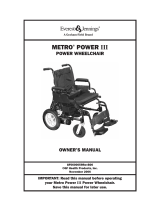 E&J METRO POWER III User manual
E&J METRO POWER III User manual
-
Everest & Jennings Traveler SE User manual
-
E&J 3J01-INS-LAB-RevB13 User manual
-
E&J -Everest&Jennings Wheelchair Traveler HTC User manual
-
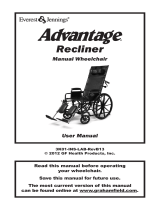 E&J 3K01-INS-LAB-RevB13 User manual
E&J 3K01-INS-LAB-RevB13 User manual
-
Everest & Jennings 3K01-INS-LAB-RevA12 User manual
-
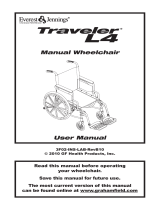 E&J TRAVELER 3F02-INS-LAB-REVB10 User manual
E&J TRAVELER 3F02-INS-LAB-REVB10 User manual
-
Everest & Jennings METRO IC4 User manual
-
Everest & Jennings Paramount XD User manual
-
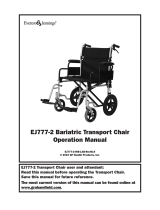 E&J EJ777-1 User manual
E&J EJ777-1 User manual
Other documents
-
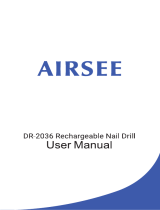 AIRSEE DR-2036 User manual
AIRSEE DR-2036 User manual
-
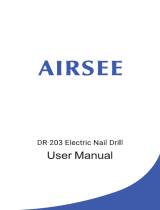 AIRSEE DR-203 Electric Nail Drill User manual
AIRSEE DR-203 Electric Nail Drill User manual
-
RHYTHM HEALTHCARE K4 Owner's manual
-
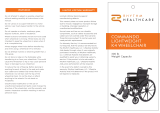 RHYTHM HEALTHCARE M170-3-416SF User manual
RHYTHM HEALTHCARE M170-3-416SF User manual
-
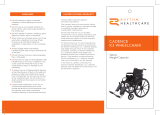 RHYTHM HEALTHCARE M170-1-316SF User manual
RHYTHM HEALTHCARE M170-1-316SF User manual
-
Sunrise Medical Pulse 6SC Owner's manual
-
Invacare Power 9000 Owner's Operator And Maintenance Manual
-
Invacare Ranger II 250 Series User manual
-
Invacare PRONTO R2-250 User manual
-
Drive Medical 2850-18 Owner's manual























































